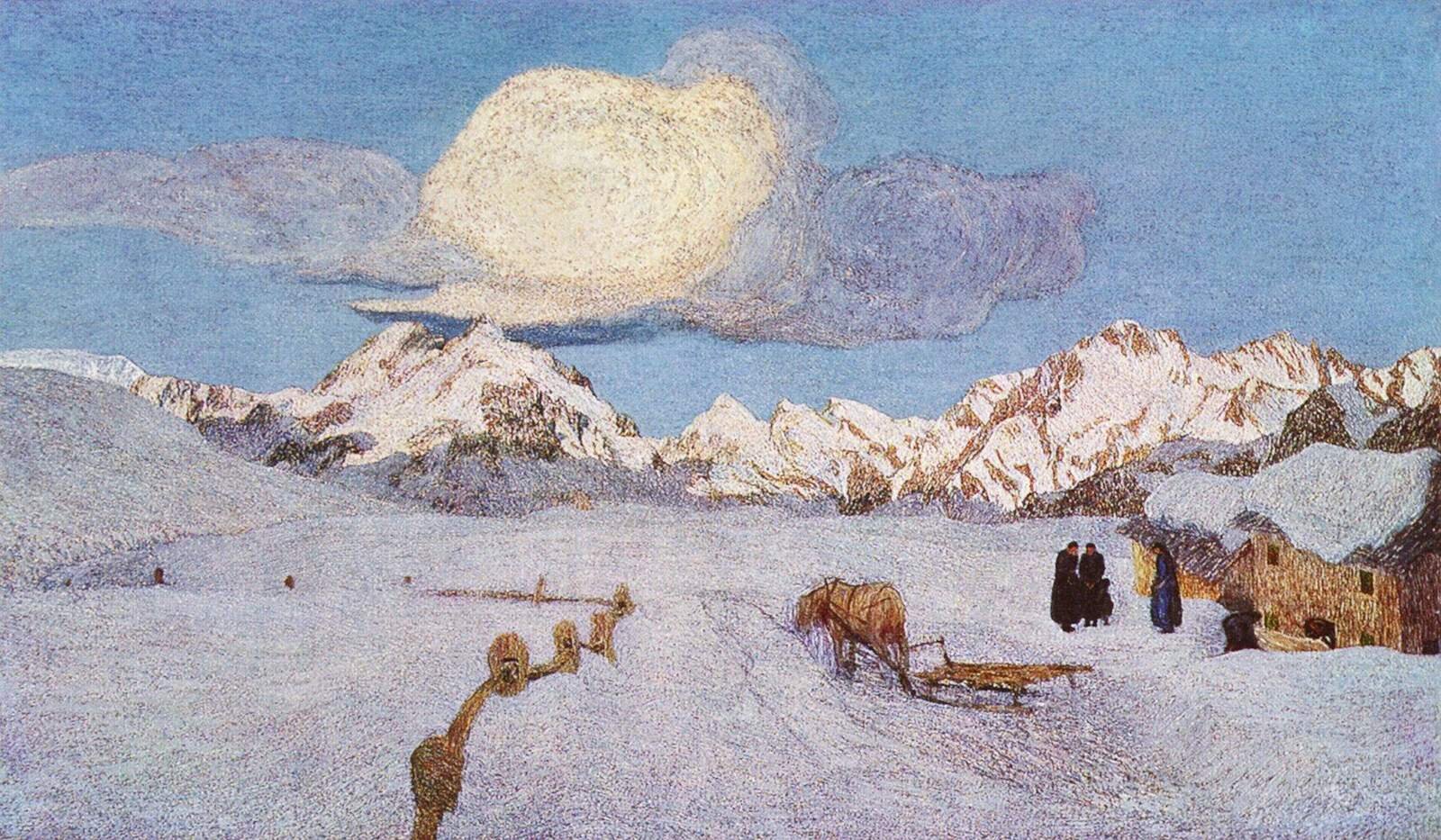An Alpine Life: Giovanni Segantini

For all the sights and sounds of St. Moritz, venture out of the center of town a bit towards St. Moritz-Bad, and it becomes a little bit easier to appreciate the alpine landscape around you. A quiet, peaceful walk along the lake will eventually lead you to what appears to be a small chapel, a stone building with a large dome. It’s home to one of the most famous artists you may not be familiar with.
Midday in the Alps, 1891. Segantini Museum, St. Moritz
Giovanni Segantini was born in 1858 in what is now South Tyrol, Italy to humble and tragic beginnings. Orphaned by age seven, he was found wandering the streets of Milan and put into a reformatory, where one chaplain with a keen eye took notice to his drawing ability. Unable to read or write at the time, Giovanni was also stateless - in an apparent oversight, his half sister renounced their Austrian citizenship, yet neglected to petition the Italian government.
Like the changing seasons that roll through the pastoral alpine landscapes that Giovanni loved to paint, his style and life reflected a similar shift in the art world. Despite the turmoil in his life, Giovanni found his calling in painting and ultimately became a unique figure in art history. He was a key practitioner of the Divisionist style of painting, alongside such luminaries as Paul Signac and Georges Seurat, a style that ultimately bridged the impressionist movement and the first foray into more avant-garde and modern forms of art. As such, Giovanni played an important role in a crucial transformation in the art world - a transformation that can be examined in great detail in his own work.
Initially, Segantini painted relatively simple landscapes of common people living off of the land. As he settled with his family in the Engadine Valley in Switzerland, his painting took on a new dimension. Painting the larger, grander alpine landscapes surrounding his home, Segantini began to incorporate Symbolist images into these landscapes, pairing divine imagery with the stunning natural beauty.
“I am now working passionately in order to wrest the secret of Nature’s spirit from her. Nature utters the eternal word to the artist: love, love; and the earth sings life in spring, and the soul of things reawakens”
Today, Segantini remains a bit of an under-appreciated artist, partly because he was unable to capitalize on his growing recognition during his prime. In 1890, he was awarded his own room at the Salon des XX in Brussels, a prestigious honor awarded to greats such as Paul Cézanne and Vincent Van Gogh, but was unable to attend because he did not have a passport. Throughout his life, Switzerland offered citizenship, but Segantini repeatedly declined, saying his true home was Tyrol.
The small museum dedicated to him in St. Moritz, then, is a perfect place to honor his legacy, the grandest of alpine settings, surrounded by the mountains that he loved and the landscapes that inspired him to take his work to greater heights, and ultimately become one of the most pivotal figures in art history.
Alpine Landscape, 1893-94
Return from the Woods, 1889
The Two Mothers, 1889
Ava Maria on the Lake, 1886
The Punishment of Lust, 1891
ALPINE TRIPTYCH
The Alpine Triptych below was commissioned as a large panoramic to be featured in its own room at the 1900 Exposition Universelle in Paris. Ultimately pared down for financial reasons, Giovanni worked on these large panels outside in the Swiss Alps, storing them inside of large wooden shelters.
However, the pace of his work, combined with the altitude of the Alps affected his health greatly. He painted these, his most famous work, until his death of accute peritonitis in 1899. While Switzerland awarded Segantini citizenship posthumously, (and the triptych panels are now located at the Segantini Museum in St. Moritz), in death, as in life, his place was not defined by a physical presence in a country, but in a spiritual place in the mountains.
Life, 1898-99
Nature, 1898-99
Death, 1898-99

